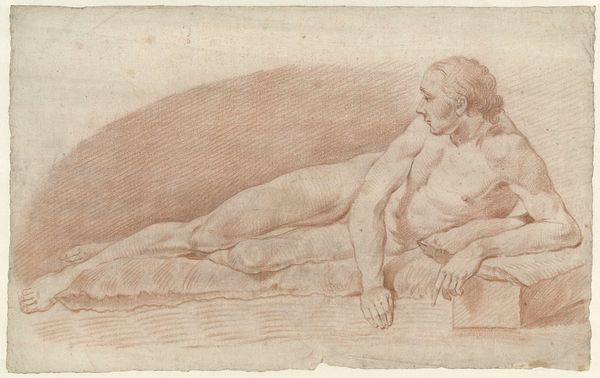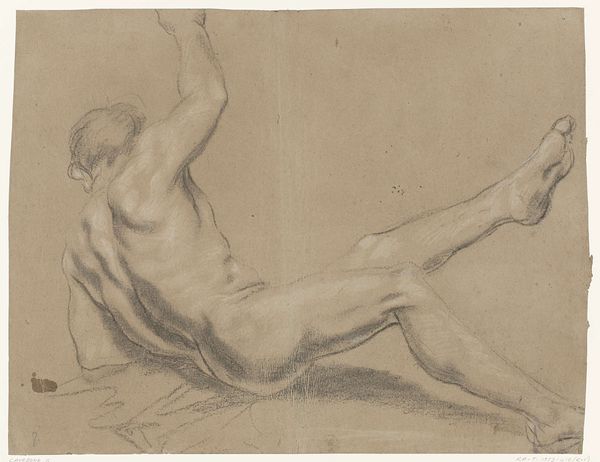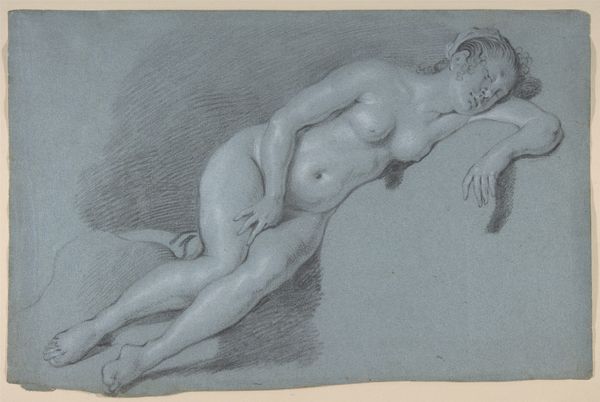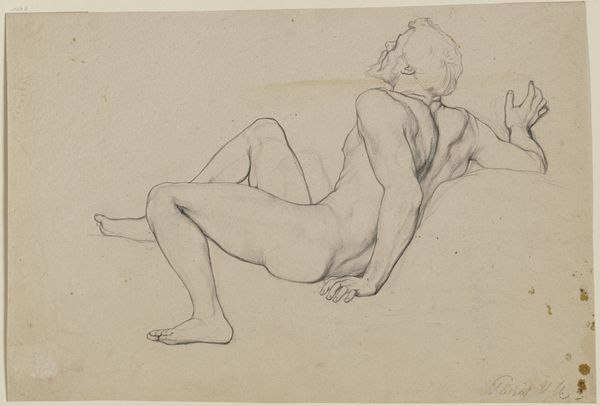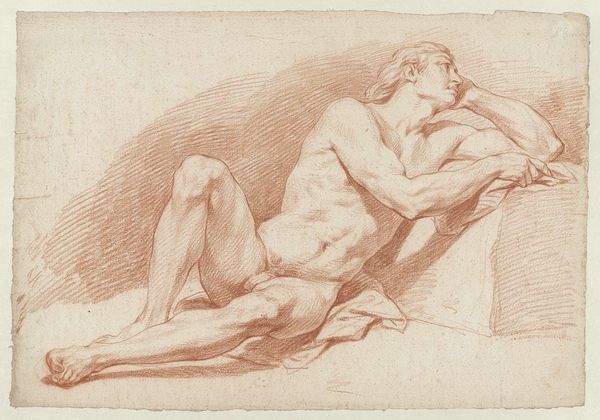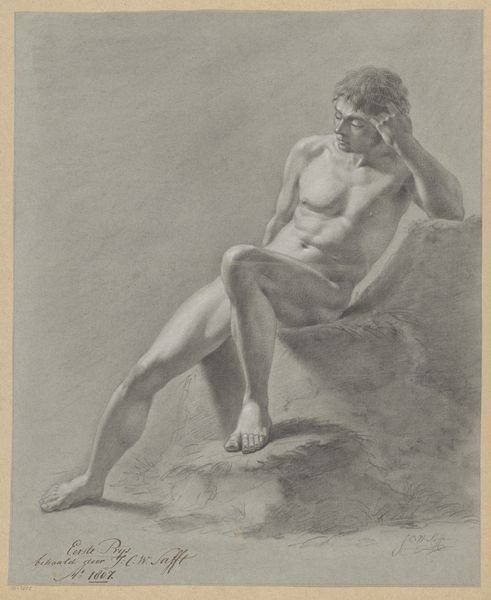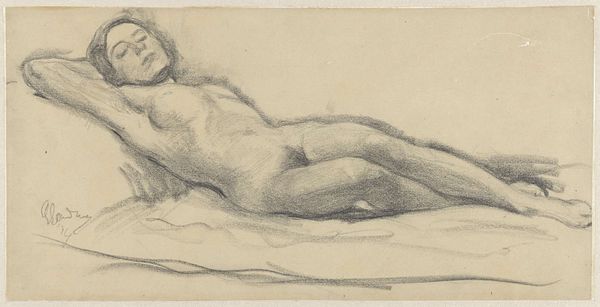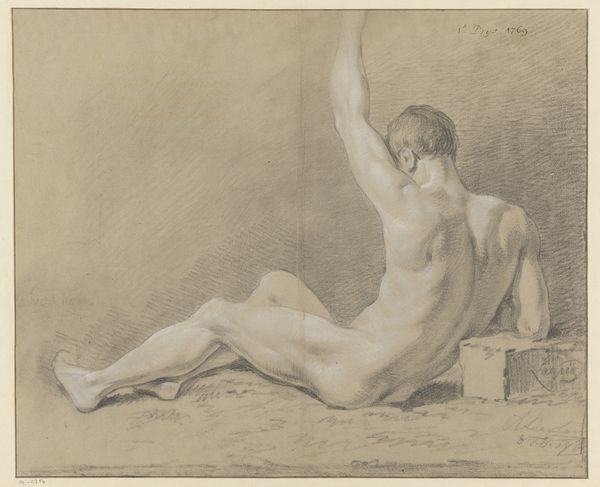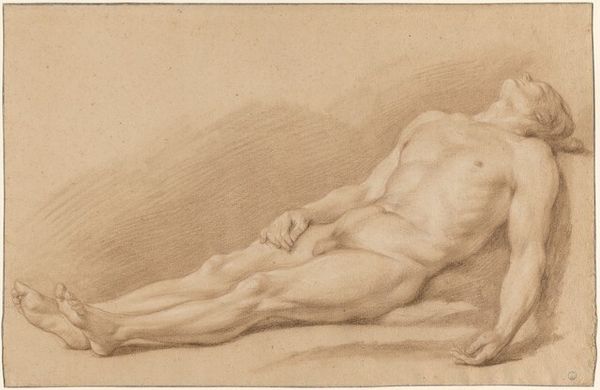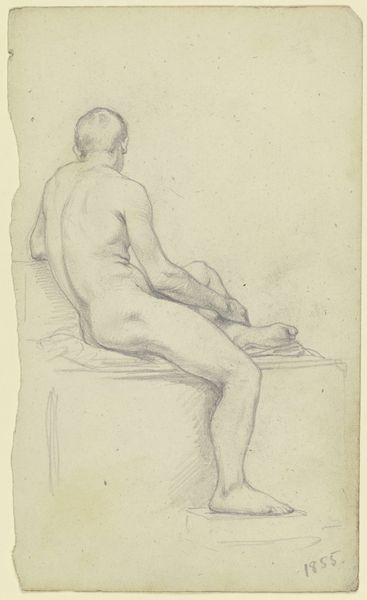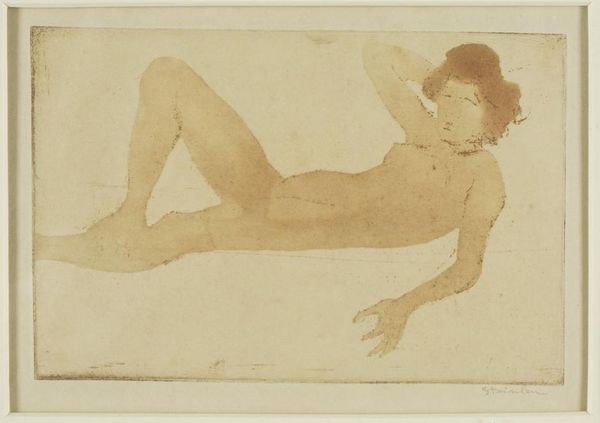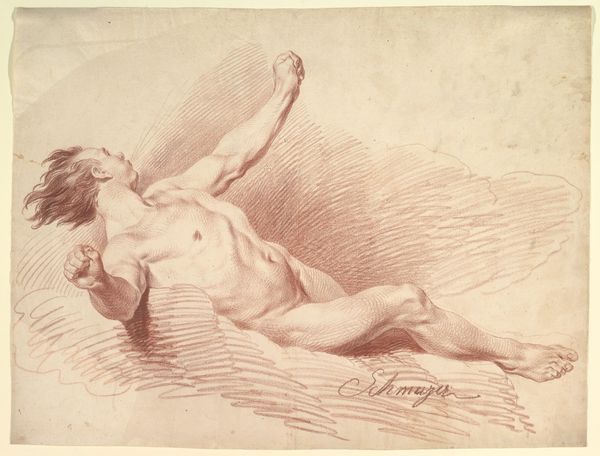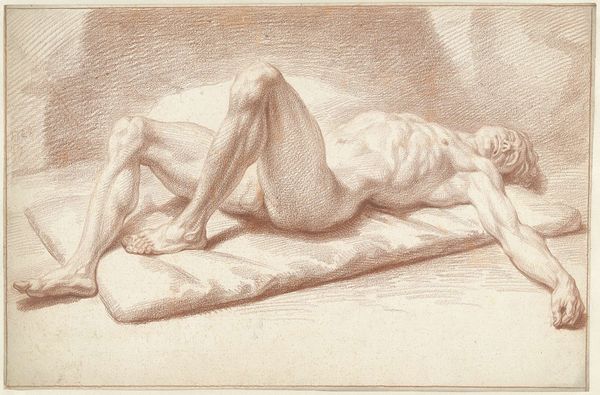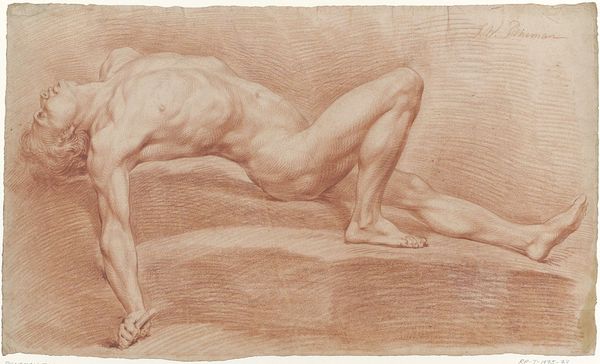
drawing, paper, pencil
#
portrait
#
drawing
#
pencil sketch
#
charcoal drawing
#
paper
#
pencil drawing
#
pencil
#
portrait drawing
#
academic-art
#
nude
#
realism
Dimensions: height 408 mm, width 276 mm
Copyright: Rijks Museum: Open Domain
Curator: This is "Study of a Half-Lying, Half-Sitting Boy" by Giuseppe Bottani, dating approximately from 1727 to 1784. It's currently housed here at the Rijksmuseum. Editor: It’s immediately striking how softly lit the figure is, almost luminous against that terracotta paper. The pose is both relaxed and subtly melancholic. Curator: It is a portrait in the academic style, focused intensely on realism. Drawings like these were preparatory studies. We should consider the cultural climate in which the male nude was studied. Were these models able to exercise their own agency and how might issues like consent have played out? Editor: Absolutely. But purely from a formal standpoint, look at the dynamism achieved with minimal lines. Notice the textures: the cross-hatching that defines the ground and the smoother, more continuous lines used to contour the boy's form. Bottani's mastery of line and shadow creates an undeniable tension, and thus an arresting form. Curator: The vulnerability expressed through the boy’s pose surely intersects with how youth and innocence were framed during that era. As a prep sketch it is likely one of many and therefore offers an interesting insight into the way his students at that time understood beauty, form and gender. How might his identity have affected his relationship to the work? Editor: Possibly. The tonal uniformity—that pervasive reddish hue—creates an interesting flattened effect. It denies a certain depth. Perhaps it underscores a move away from illusionistic representation and towards emphasizing line and form. Curator: Right, but how are we viewing that representation today? We cannot divorce these images from current conversations about the male gaze and representation. Examining it under this light reveals an inherent power dynamic that simply cannot be ignored. Editor: Indeed. It really is remarkable to consider how a seemingly straightforward study like this offers endless entry points and provokes diverse interpretations, from its historical origins to its contemporary implications. Curator: Indeed, what's rendered, why and by whom requires endless probing, making even preparatory drawings complex dialogues about aesthetics and power.
Comments
No comments
Be the first to comment and join the conversation on the ultimate creative platform.
